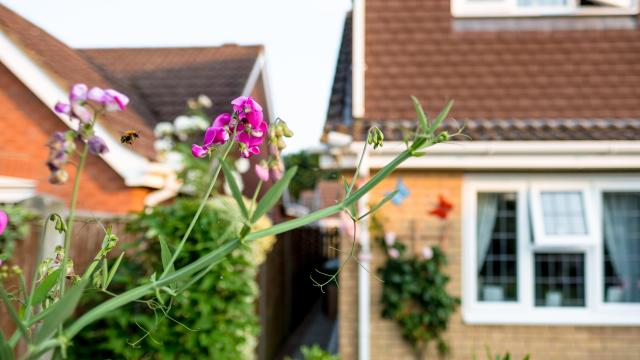Spring means flowers, and where there are flowers, there will be bees. These pollinators are a crucial part of the ecosystem, facilitating reproduction for many plants and playing a crucial role in the food chain. But what a lot of people don’t realise is that most bees don’t live in hives. Seventy per cent of bees live underground in nests, not in hives like honey bees.
What a ground-dwelling bee nests looks like
First, it’s important to be able to spot a bee nest. Often, the entrance to a bee nest will resemble an anthill with a mound of earth around a hole in the ground. A bee’s nest will have a larger opening than most ant hills, so that’s one way to tell the difference. Usually, anthills will have lots of ants coming and going from them, but a bee’s nest will have far less activity.
If you spot what you think is a bee’s nest and it’s got a lot of traffic in and out, look out, because it’s probably a wasp’s nest. Wasps tend to be more aggressive than bees, so proceed with caution if you see lots of them.
Leave some exposed soil
To welcome ground-nesting bees, exposed soil is key. Since they need to dig into the ground to build their nest and lay eggs, ground-dwelling bees prefer exposed soil as a nesting spot. If you have a south-facing slope, this is an excellent spot since the sun will warm the soil in springtime and make nest-building easier.
Have the right type of soil available
Bees need a soft, malleable soil type to dig into; densely-packed soil or soil that’s too sandy to hold a structure together won’t be a good place for bees to nest. Keeping a loosely-packed mixture of sand and soil will encourage ground-dwelling bees to build a nest, and your garden will reap the benefits. Since some bees prefer to nest in existing holes than to dig their own, leaving some disturbed areas from weeding, or even poking a few pencil holes for the bees to barrow into, are good ideas.
Leave out the weed barrier
In addition to having some good nest-building soil, leaving areas of your yard free of weed barriers, mulch, or landscaping cloth is a good way to invite bees to build a nest. Since ground-dwelling bees need to dig to build their nests, any kind of artificial soil cover will prevent them from finding a good spot. There are some species of ground-nesting bees that can build nests as far as 3.05 m underground, so giving them access to unobstructed soil is key.
Allow leaves to mulch
Although many people like to keep their lawns free of dead leaves and other plant detritus, leaving the leaves on the ground provides a habitat for ground-nesting bees. Since the leaves create places for ground-dwelling bees to hide, they’re a good type of ground cover to have around. In addition to the benefits to the bees, many gardeners refer to fallen leaves as brown gold. Allowing leaves to mulch into the soil will enrich it for your garden plants.
Choose where you want them to be
If you’re not ready to fully re-wild your whole yard, you can consider creating an area or a particular garden bed that’s a good bee habitat. You don’t have to allow nature to take over your whole lawn to have a corner with some dead leaves, wildflowers, and exposed soil. If you prefer to have a lawn, you could consider edging it with a more natural border, or grow a bed of wildflowers in a particular area.

Leave a Reply
You must be logged in to post a comment.